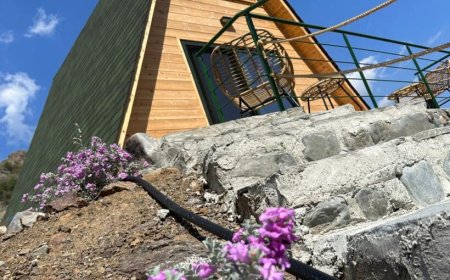Understanding the Swimming Pool Sand Filter: A Complete Guide
A clean and sparkling swimming pool is a true luxury, but maintaining it requires the right equipment. One of the most essential components in pool maintenance is the swimming pool sand filter. This filtration system is responsible for removing dirt, debris, and impurities from the water, ensuring a safe and enjoyable swimming experience.
A sand filter operates by pushing water through a bed of special-grade sand. As the water flows through the sand, particles and contaminants are trapped, and clean water is returned to the pool. This simple yet effective technology has made sand filters one of the most popular choices among pool owners for decades.
How a Swimming Pool Sand Filter Works
A swimming pool sand filter consists of a large tank, usually made from fiberglass, metal, or plastic. The tank is filled with sand, often made from silica, which acts as the filtering medium. The process is straightforward:
-
Water from the pool enters the filter through the intake pipe.
-
It is pushed down through the sand bed.
-
Dirt and debris are trapped in the sand grains.
-
Clean water exits the tank through the bottom and is returned to the pool.
Over time, the sand becomes clogged with debris and needs to be cleaned. This is where backwashing comes in. By reversing the flow of water, the filter flushes out accumulated contaminants, restoring its efficiency.
Advantages of Using a Sand Filter
Choosing the right pool filter system is crucial. A swimming pool sand filter offers several key advantages that make it a top choice for both residential and commercial pools.
Low Maintenance
Compared to other types of filters, sand filters require minimal maintenance. They typically only need backwashing every few weeks and sand replacement every five to seven years, depending on usage and water quality.
Cost-Effective
Sand filters are generally more affordable than cartridge or diatomaceous earth (DE) filters. Their long lifespan and low operational costs make them a cost-effective choice for many pool owners.
Reliable Filtration
While not as fine as DE filters, sand filters are efficient at trapping particles down to 20-40 microns. For most pools, this level of filtration is more than adequate to maintain clean, clear water.
Durable and Long-Lasting
A well-maintained swimming pool sand filter can last many years. The tanks are built to withstand harsh weather and water pressure, making them a dependable part of any pool system.
Choosing the Right Sand Filter for Your Pool
Selecting the right sand filter depends on several factors including pool size, usage, and flow rate.
Pool Size and Filter Capacity
Larger pools require filters with higher capacity to manage the volume of water efficiently. Check the manufacturers specifications to ensure the filter can handle your pools water volume.
Pump Compatibility
The filter must be compatible with your pool pump. A mismatch can lead to inefficient filtration or even damage to the system. Ensure the flow rate of the pump matches the filters design flow rate.
Type of Sand
Not all sand is created equal. Pool sand is specially graded and should never be substituted with construction sand. Alternatives like zeolite or glass media can offer finer filtration and longer life, but they come at a higher cost.
Maintenance Tips for Sand Filters
Proper maintenance ensures your sand filter continues to work efficiently throughout the swimming season.
Backwashing
This is the process of cleaning the filter by reversing the flow of water to flush out trapped debris. Most sand filters come with a multiport valve that makes backwashing easy. Typically, it should be done every 24 weeks or when the pressure gauge rises 810 psi above normal.
Inspecting the Sand
Over time, the sand inside the filter becomes worn and rounded, reducing its ability to trap debris. Replace the sand every 57 years, or sooner if you notice cloudy water or poor filtration.
Checking for Leaks
Inspect the filter housing and connections regularly for leaks. Seals and O-rings can wear out and may need replacement. Addressing small issues promptly can prevent larger, costly repairs.
Winterizing the Filter
In colder climates, its essential to winterize your sand filter to prevent damage from freezing. Drain all water from the filter and store it in a dry, sheltered location if possible.
Common Issues and Troubleshooting
Like any pool equipment, sand filters may occasionally run into issues. Understanding common problems can help you troubleshoot effectively.
Cloudy Water
If your water remains cloudy even after backwashing, it may be a sign that the sand needs replacement or that the filter is undersized for your pool.
Channeling
Channeling occurs when water creates paths through the sand, bypassing filtration. This can happen if the sand is too old or if backwashing is done improperly. Replacing the sand often solves this problem.
Pressure Problems
High pressure usually indicates a dirty filter that needs backwashing, while low pressure may point to a clog or air leak in the system. Regularly monitor the pressure gauge to identify problems early.
Environmental and Health Benefits
Maintaining clean water isnt just about aestheticsits crucial for health and safety. A well-functioning swimming pool sand filter reduces the need for excess chemicals and minimizes exposure to harmful microorganisms. Clean water also means less wear on your pools equipment and a more pleasant swimming experience overall.
Additionally, using alternatives like glass or zeolite as a filter medium can improve water clarity while reducing environmental impact. These materials require less frequent replacement and can improve water conservation by reducing backwash frequency.
Conclusion
A swimming pool sand filter is a vital part of keeping your pool clean, safe, and enjoyable. Its simple operation, low maintenance requirements, and affordability make it a preferred choice for many pool owners. With proper care, your sand filter will provide reliable performance for years, ensuring your pool remains a crystal-clear oasis.



































